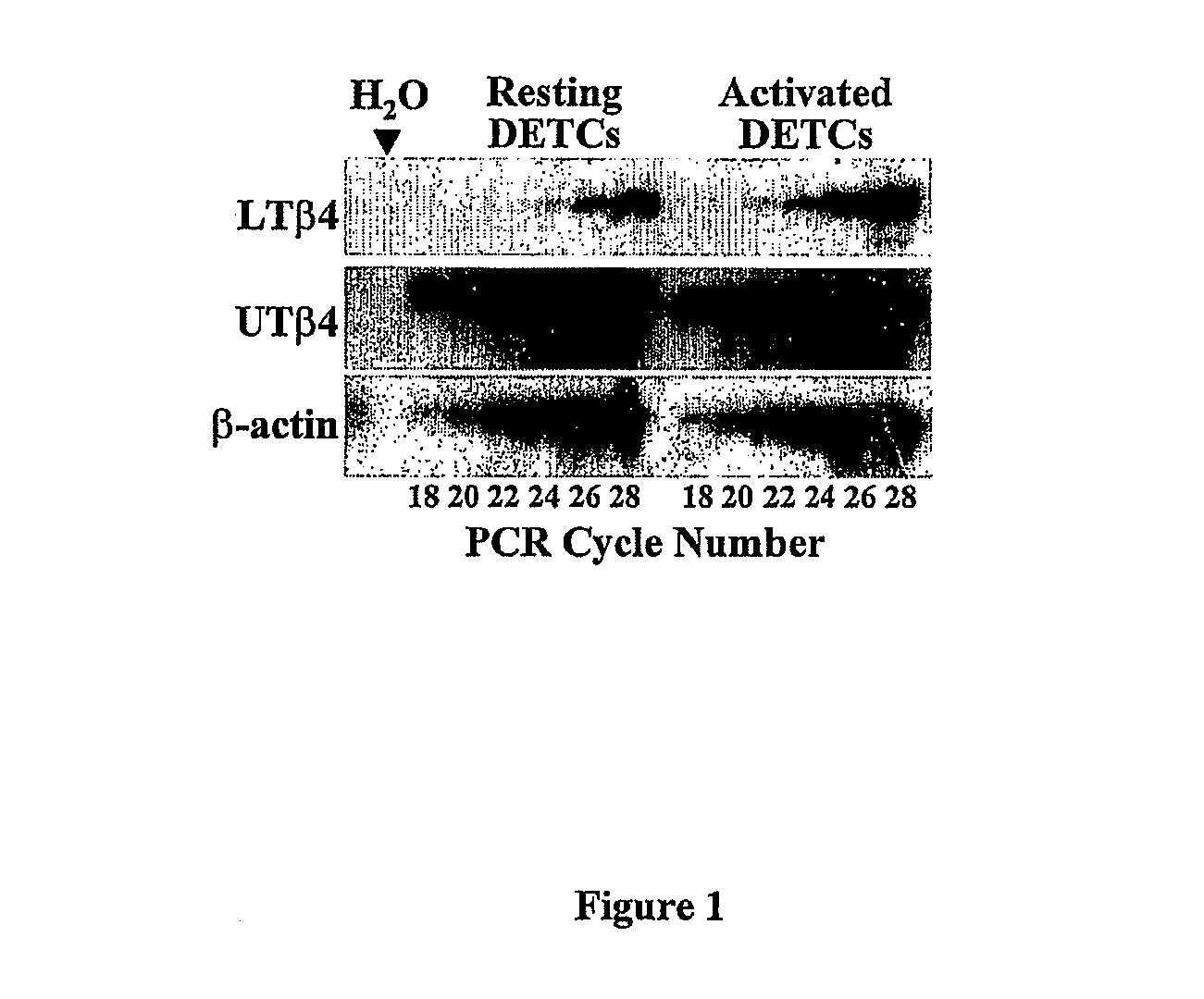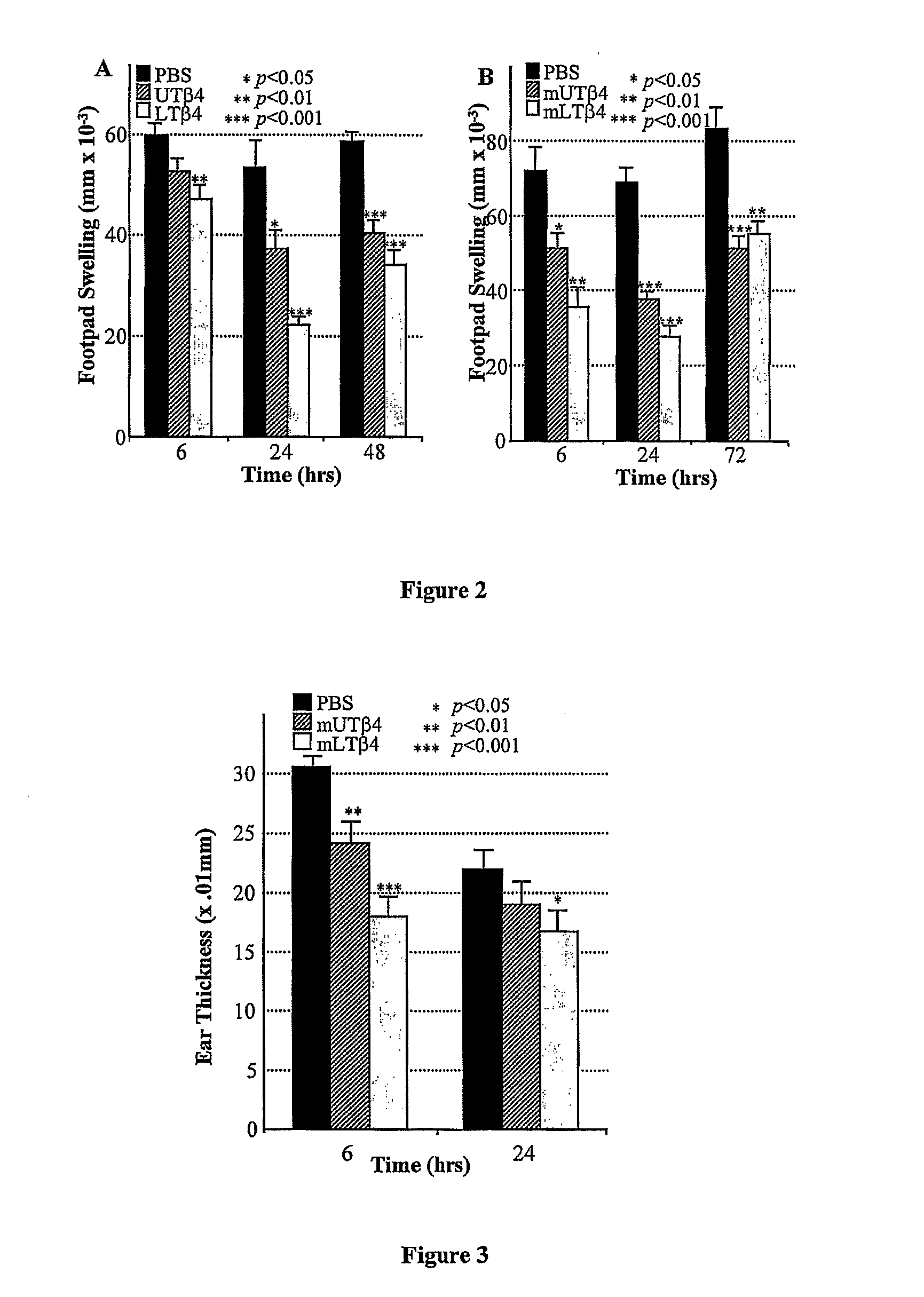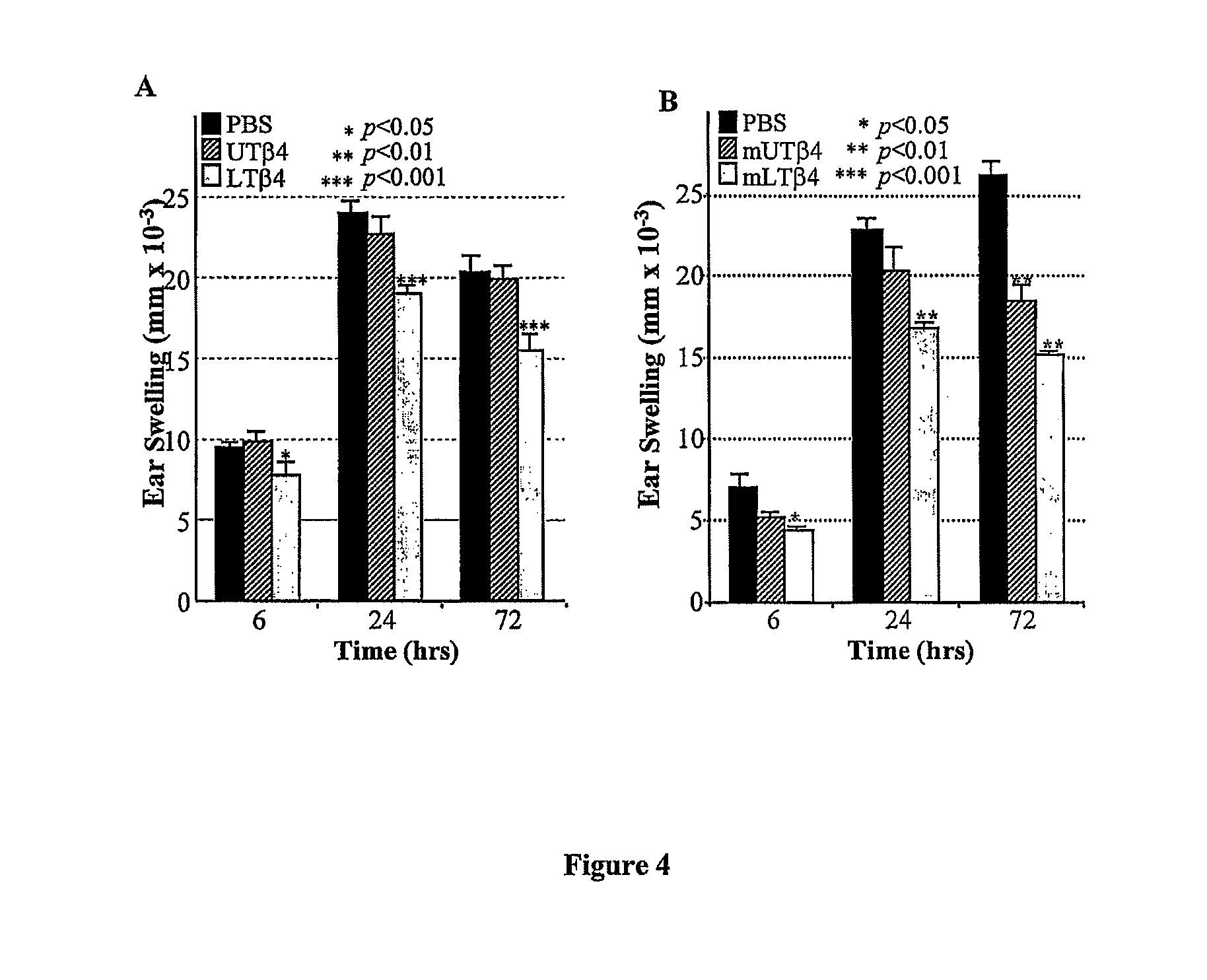Anti-inflammatory and wound healing effects of lymphoid thymosin b-4
a technology of lymphoid thymosin and anti-inflammatory effect, which is applied in the direction of hormone peptides, genetic material ingredients, peptide/protein ingredients, etc., can solve the problems of wounds and other significant medical problems
- Summary
- Abstract
- Description
- Claims
- Application Information
AI Technical Summary
Benefits of technology
Problems solved by technology
Method used
Image
Examples
example 1
Expression of pTβ4 Splice-Variants by Vγ5+ DETC
[0149]Situated within numerous epithelia of rodents and many other vertebrates are intraepithelial lymphocytes (IELs) composed predominantly of T cells and frequently enriched in those expressing heterodimeric γδ T cell receptors (TCR) [reviewed in 1]. IELs would seem ideally located to maintain epithelial integrity in the face of environmental insults, and it was recently shown that γδ cell deficient mice are highly susceptible to chemically-induced squamous cell carcinomas that can in vitro be directly targeted for cytolysis by cutaneous IELs, specifically Vγ5+ dendritic epidermal T cells (DETC) [reference 2].
[0150]While DETC can kill dysregulated epithelial cells, they have also been reported to synthesise fibroblast growth factors that may promote epidermal wound healing [reference 3]. Consistent with a role for cutaneous IELs in maintaining epidermal integrity, is the observation that the skin of FVB or NOD mice lacking DETC become...
example 2
Synthesis of Thymosins for Bioassay
[0156]Available evidence indicates that the major fraction of UTβ4 undergoes N-terminal methionine processing [references 8,12], but the known rules for aminopeptidase activity [reference 15] do not permit one to male the same assumption for LTβ4. Therefore, in our experiments to determine the biological activities of UTβ4 and LTβ4, we synthesised both N-terminal methionated and un-methionated forms of each polypeptide. The four peptides 104; methionated-UTβ4 (“mUTβ4”), LTβ4; and methionated-LTβ4 (“mLTβ4”)) were synthesized by CS Bio Co. (San Diego, Calif.), using peptide coupling chemistry, and purified (>98%) by reverse phase HPLC (high performance liquid chromatography). The amino acid sequences were as follows: UTβ4: N-SDKPDMAEIEKFDKSKLKKTETQEKNPL-PSKETIEQEKQAGES-C (SEQ ID NO:1); mUTβ4: N-MSDKPDMAEIEKFDKSKLKKTETQEINPL-PSIETIEQEKQAGES-C (SEQ ID NO:2); LTβ4: N-LLPATMSDKPDMAEIEKFDKSKLKKTE-TQEKNPLPSKETIEQEKQAGES-C (SEQ ID NO:8); and mLTβ4: N-MLLPAT...
example 3
Activities of UTβ4 and LTβ4 in λ-Carrageenan-Induced Inflammation
[0163]Prior to this invention, no one had evaluated the effects of LTβ4 on neutrophil mediated inflammation. Neutrophils mediate many inflammatory reactions found in skin diseases, including neutrophilic dermatoses, pustular eruptions in systemic diseases, and neutrophilic drug eruptions. In his 2000 review article of neutrophilic dermatoses (ND), Wallach presents a classification of neutrophil mediated dermatoses including Sweet's Syndrome, Pyoderma Gangrenosum, Subcorneal Pustular Dermatosis and Erytherna Elevatum Diutinum (Wallach, D (2000) Neutrophilic Dermatoses: An Overview. Clinics in Dermatology 18:229-231). In Callen's review of “Pustual Eruptions in Systemic Disease,” neutrophils were identified in playing a role in skin manifestations of Ulcerative Colitis, Rheumatoid Arthritis, and Bechet's Disease (Callen, (2000) Pustular Eruptions in Systemic Disease. Clinics in Dermatology 18:349-353). Finally, in Roujea...
PUM
| Property | Measurement | Unit |
|---|---|---|
| molecular weights | aaaaa | aaaaa |
| molecular weight | aaaaa | aaaaa |
| genetic disorder | aaaaa | aaaaa |
Abstract
Description
Claims
Application Information
 Login to View More
Login to View More - R&D
- Intellectual Property
- Life Sciences
- Materials
- Tech Scout
- Unparalleled Data Quality
- Higher Quality Content
- 60% Fewer Hallucinations
Browse by: Latest US Patents, China's latest patents, Technical Efficacy Thesaurus, Application Domain, Technology Topic, Popular Technical Reports.
© 2025 PatSnap. All rights reserved.Legal|Privacy policy|Modern Slavery Act Transparency Statement|Sitemap|About US| Contact US: help@patsnap.com



